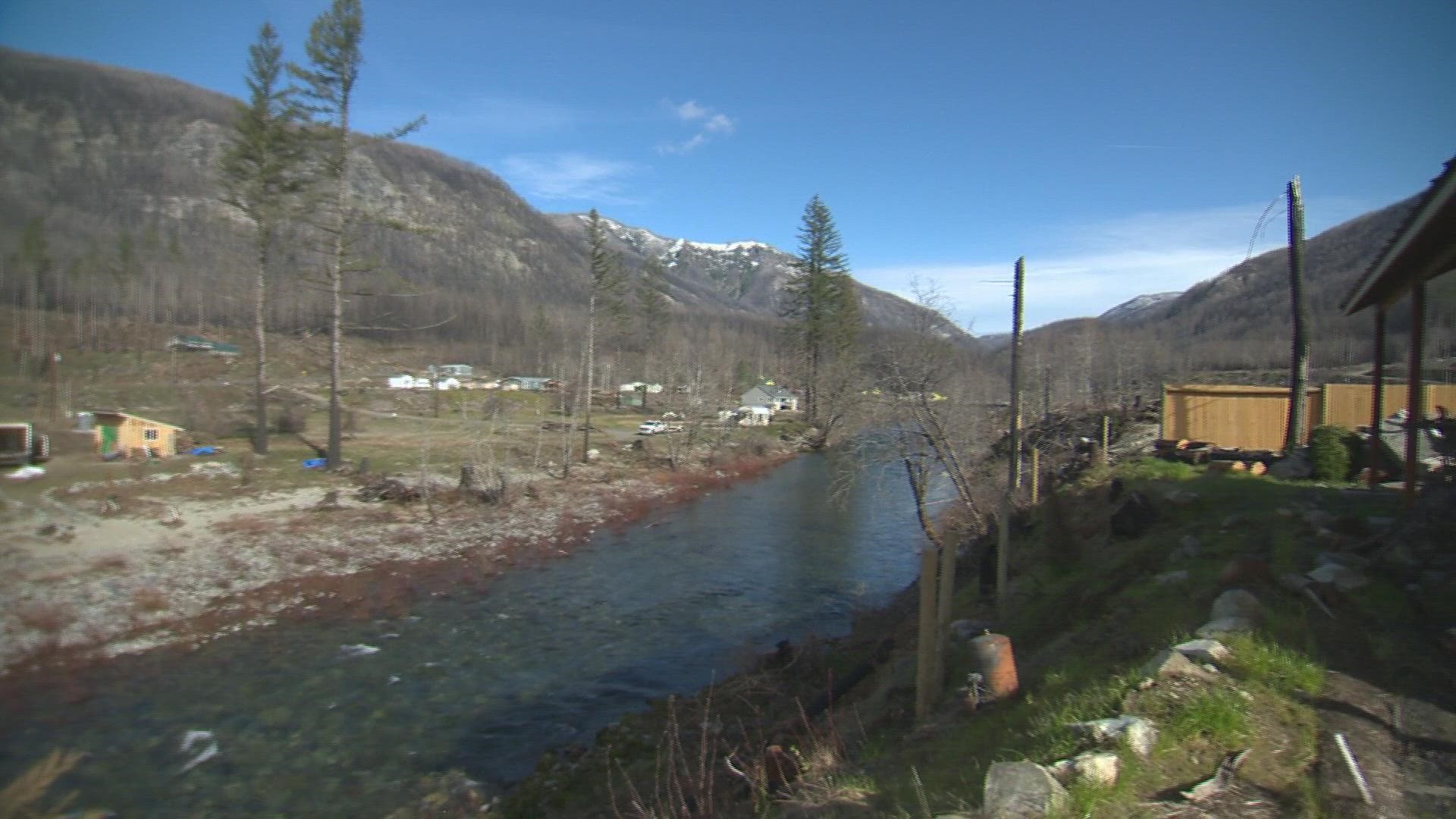LYONS, Oregon — Wildfire survivors in the Santiam Canyon are in many different stages of rebuilding. Some have been fortunate enough to finish their new homes while others have barely started. But some families are now dealing with unexpected financial hurdles.
Brandon Kirk and his wife are in the middle of rebuilding their, now fire-resistant, home in Lyons.
"The first thing we did was we went with a metal seam roof," said Kirk as he showed KGW around his new home. "The doors are steel and the windows are tempered."
Kirk's property is on the banks of the Santiam River and it has come a long way after the devastating wildfire in 2020. He said his insurance company was great but he had trouble with his mortgage company.
"Our issue was our mortgage company. I was insured for $185,000 and they took $174,000 of it. So I was left with $11,000 to rebuild the cost, plus cleanup," Kirk said.
He and his wife were told they had to apply for help from both FEMA and the Small Business Administration (SBA). He said an SBA representative visited the property and gave the green light on a loan.
"He's like, 'Oh my gosh, you did lose your house. You lost your shop. We'll give you $220,000 you know, like 1.18% interest,' and I was like, 'Awesome.' My contractor was like, 'Oh, now that should cover everything for your small 1,000-square foot home.' So that's what we worked off of," Kirk said.
So the building quickly began. But then came a financial rollercoaster.
"[We] got denied by each organization, FEMA and SBA, four times before we got actual traction and then we got an award from FEMA a year after the fact. And then we, literally 481 days later, got SBA monies," Kirk said.
KGW has heard from multiple families who have said the same thing, that they had been denied FEMA assistance numerous times, even with the help of a disaster caseworker.
Kirk said the clunky and frustrating process is taking a mental and emotional toll on wildfire survivors.
"When you have to deal with the bureaucratic process of getting denied four or five times before you get approved, and it's a known issue, it gets really frustrating. I think, unfortunately, a lot of people's mental health is just is getting worse the longer this drags on," he said.
In Kirk's case, he said once he and his wife did eventually get help from FEMA, along with help from local nonprofits and organizations, he said there were more issues.
"SBA came back said, 'Nope. So, we're going to take that FEMA award off your loan," Kirk said. "It's literally gone from $220,000 down to $50,000."
That's almost 80% less than Kirk was expecting to get. The process has been a headache for Kirk and his wife. He said at one point, he was told he wouldn't be getting a loan at all. Kirk then had to rely on local organizations, like the Santiam Service Integration Team (SIT), to give him money in order to pay some of the $95,000 he owed his contractor at the time. He said he switched gears, trying to get loans from credit unions when he was contacted again.
"SBA comes back out of nowhere and says […] we’ll give you a $95,000 loan," he said.
The agreement was that in order to get the money, Kirk would have to put the SBA on the title of their home. But then, he had another surprise.
"The day of dispersal, they [the SBA] come by and say well, we're only going to give you $50,000," he said.
Kevin Wynne, public information officer for the SBA's Office of Disaster Assistance, said there's a reason loan amounts fluctuate.
"The SBA requires that any amounts received from insurance, and which are available to the property owner, be applied to the disaster repairs," Wynne said over the phone.
Wynne also said it's against the law for the SBA to duplicate any money received for recovery.
"We're depending on that [money] to build the house and they're not accounting for the fact that we had to do clean-up. We had to, you know, rebuild the fence. We're not rebuilding our 900-square foot cedar deck because we can't afford it," said Kirk, citing additional costs associated with recovering from the fire.
Melissa Baurer with the Santiam Service Integration Team, which helps wildfire survivors and pairs them up with disaster caseworkers, said other families are dealing with similar issues.
"They were expecting that loan to help them and their recovery and they were accounting for that when they hired their contractor, and now they're not getting that [money]," Baurer said.
Meantime, Kirk is grateful for help from Baurer and SIT. He said he's also grateful for state money that's helping him pay for his home because of the fire-proofing measures he's taken. Kirk is trying to stay positive even though he said he still owes his contractor $40,000.
"Melissa seems pretty confident she's gonna find $40,000 somehow and so we'll see," Kirk said.
He anticipates he'll have to spend at least another $10,000 to insulate drywall and finish the house. Kirk is hoping the house will be finished in April. But for now, he knows if there's another wildfire his home should be safe.
"It will be a rockslide, or a meteor, or a volcano. But it's not going to be wildfire. I promise that," he said.
Kirk said people in the Santiam Canyon are weathering the same storm since 2020 but are in different boats.
"People still need help and that's something to remember. We're all still recovering and a lot of people aren't nearly as far along as you see here," he said.
"As we […] encounter more and more disasters that have a greater severity and a bigger impact on rural and urban Americans, it's a broken system that we need to fix honestly."

